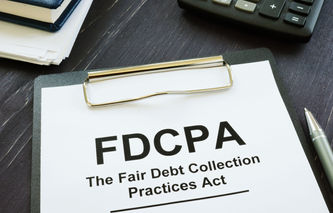In an attempt to better service the creditworthiness assessment market, several of the reporting bureaus have announced what are termed "thin-file" credit scores for individuals with little or no history. By doing so, these bureaus allow lenders to reach an under-served market of Americans with little or no traditional debt repayment records.
In this article, we're going to talk about the new predictive credit scoring models from Experian, Equifax, and TransUnion; the three largest credit bureaus in the United States. In addition, we'll talk about alternative models from companies such as Fair Isaac, First American, and PRBC. But first, we're going to explain how these models are different from the traditional FICO credit scores.
Credit Scoring Models
Based on the models developed by Fair Isaac Corporation, and published by the three major credit-reporting bureaus, FICO are perhaps the most popular credit scores published today. The calculation of these traditional scores, as well as the new FICO '08 model, is based on the following:
Payment History (35%)
Outstanding Debt (30%)
Credit History (15%)
New Credit (10%)
Miscellaneous Debt Factors (10%)
The more information a credit bureau has for each of these factors, the greater the predictive power of the model. Unfortunately, the reverse is also true. When there is little or no information for an individual, the predictive power of the model is greatly diminished. In fact, a lack of information may even prevent a FICO credit score from being calculated.
"Thin" File Scores
According to statistics published by the Federal Deposit Insurance Corp., there are an estimated 30 million "no-file" and nearly 50 million "thin-file" consumers in the United States. This represents approximately 20% of all households, including:
Recent immigrants
Young adults or recent college graduates
Un-banked or under-banked consumers; individuals that might not hold a checking or savings account with a bank
Because lenders and other creditors cannot obtain a traditional credit risk score for these households, these same individuals are often denied access to favorable terms on credit cards, car loans, and mortgages.
New Credit Scoring Models
To fill this information gap, a number of credit scoring agencies have developed new models that help forecast risk based on an expanded list of predictors. Payment patterns and influencers in these models include:
Payment of monthly rents or leases
Payment of telephone, electric, cable television, natural gas, and insurance bills
Internet and catalog purchases
Public sources of information including tax liens, criminal records, and bankruptcy filings
Using this non-credit / non-debt information, creditworthiness scores can be calculated and used by lenders to determine loan terms as well as the need to require deposits prior to extending service to new customers. In total, there are six new scoring models, and the remainder of this article will be dedicated to summarizing each in the sections below.
Experian / eBureau: Emerging Credit Score
Aimed at determining the creditworthiness of the un-banked and under-banked segment of the population, Experian teamed-up with eBureau in March 2008 to provide what is called the Emerging Credit Score.
A composite of eBureau's eScore, and Experian's traditional credit information, the Emerging Credit Score model utilizes electric, natural gas, cable television payments, along with catalog and Internet purchases to develop scores with numerical values ranging from 100 to 999.
Equifax: MarketMax
Announced in January 2008, Equifax's MarketMax is a risk assessment and verification model that analyzes consumer demographics, address information, bank accounts closed for cause, utility disconnections, fraudulent activity, and public records to predict risk levels and creditworthiness.
Scores for MarketMax range from 501 to 900.
TransUnion: Link2Credit Thin File
Back in June 2007, TransUnion, in partnership with L2C Inc., developed the thin file model named Link2Credit. This model leverages information such as payday loans, rental payments, and debt information along with cellular plan data to develop an individual's credit score. The model helps lenders predict the likelihood of a consumer becoming delinquent on payments and / or charge-off occurring in the next 12 months.
Scores generated by the Link2Credit model range from 300 to 850.
Fair Isaac: FICO Expansion
First created in 2004, the FICO Expansion score developed by Fair Isaac is another model aimed at providing credit information for consumers with "thin" histories. The FICO Expansion model uses information such as rent or lease payment history, public records, as well as information supplied by utilities to develop its creditworthiness scores. In fact, this ScoreNet network aggregates information from over 90 commercial data suppliers.
The Expansion model produces scores that range from 300 to 850.
First American CREDCO: Anthem
The Anthem Score, published by First American CREDCO, is derived from the Anthem Report, which considers outstanding credit, length of credit, payment history, property rental, utility, and insurance payments. Emphasis is placed on verifying sources and matching to applicant identities.
Primarily used by mortgage lenders, an individual's Anthem score will range from 325 to 850.
PRBC: Bill Payment Score
Perhaps the most accurately named model of this type, PRBC's Bill Payment Score, allows consumers to volunteer their own sources of bill payment history including leases, mortgages, utilities, telephone, and cable television. This information, along with PRBC's sources of credit data, allow for the calculation of the Bill Payment Score.
PRBC's model uses a weighting system for trade lines. This means that mortgage and rent payments are given more weight than electric bills. The Bill Payment Scores range from 100 to 1,000.







.jpg)
.jpg)